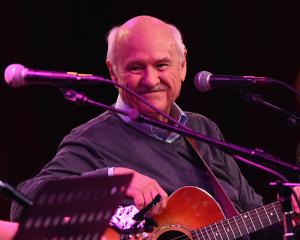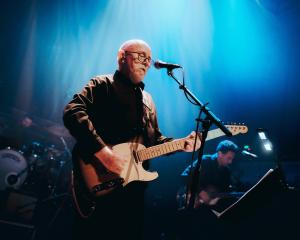What is your favourite instrument?
I'm a multi-instrumentalist, so I have lots of gadgets and gizmos that I use to make music: guitars, mandolins, banjos, Dobros and lap steels, pedal steel, Weissenborn, accordions, mandocello - everything from synths and theremins to harmonicas and musical saws. So, I don't reckon I have a specific favourite kind of instrument. Each has its place in the grand scheme of things. But the one I probably treasure the most is my Dreadnought herringbone flat-top guitar made for me by the late R.L. Givens.
Can you recall where and when you discovered it?
Bob Givens was a good friend, a pioneer luthier, who was years ahead of his time on a whole lot of levels. He was best known as a mandolin maker (I'm lucky enough to have one of his mandolins as well). I worked for Bob for a time in California, sanding mandolin tops, slotting fretboards, doing general grunt work in his shop, and learning. Bob eventually moved up to Sandpoint, Idaho, where he continued to make guitars and mandolins until his death in 1992. He made the herringbone guitar for me in 1979, along with a beautiful A-model mandolin.
We had talked for years about what makes a great flatpick and fingerpick guitar - everything from the woods used, to the scale length, the width of the fingerboard, and all sorts of other things, including aesthetics. He told me he had a stash of very fine Hawaiian koa wood, and some especially nice Sitka spruce for the top, so I told him to go ahead with it. The only demand I made was that he inlay his name into the peghead, along with a Gibson F-4 mandolin flowerpot inlay. He never put his full name on instruments, but just used ''RLG'' instead, so I had to twist his arm to do it, and I'm glad I did. He added the herringbone binding, along with some snowflake fret markers, as a tip of the hat to the old Martin D-28 guitars from years gone by. The guitar ended up being a cannon - that's bluegrass talk for a guitar that just speaks, is loud, clear, and has a great bottom end. It plays in tune all the way up the neck. It is just a lovely, graceful instrument.
Has it become more special over time?
Like an old Martin, the top has yellowed in the last 30-plus years. And, like the Martin rosewood guitars, it took a few years to settle into its own tone, which is a nice round, mellow voice. And, yes, it certainly has aged well over the years. It's like having a friendly handshake with a song.
Has the instrument inspired you to write any songs? If so, name a couple (and explain their genesis).
It has certainly helped me along the way. Songs like Muley Brown (recorded by Bill Hearne and Jerry Jeff Walker), Railroad's Callin' My Name (recorded by Bill & Bonnie), and Sing A Lullaby (recorded by Donna Dean) were all written on that guitar.











